Ha Giang, the northernmost borderland of the country, is not only famous for its tourist attractions, but also known for its traditional craft villages imbued with national cultural identity. Among them is the traditional incense making profession of ethnic minorities in the highlands of Linh Ho commune, Vi Xuyen district, Ha Giang.
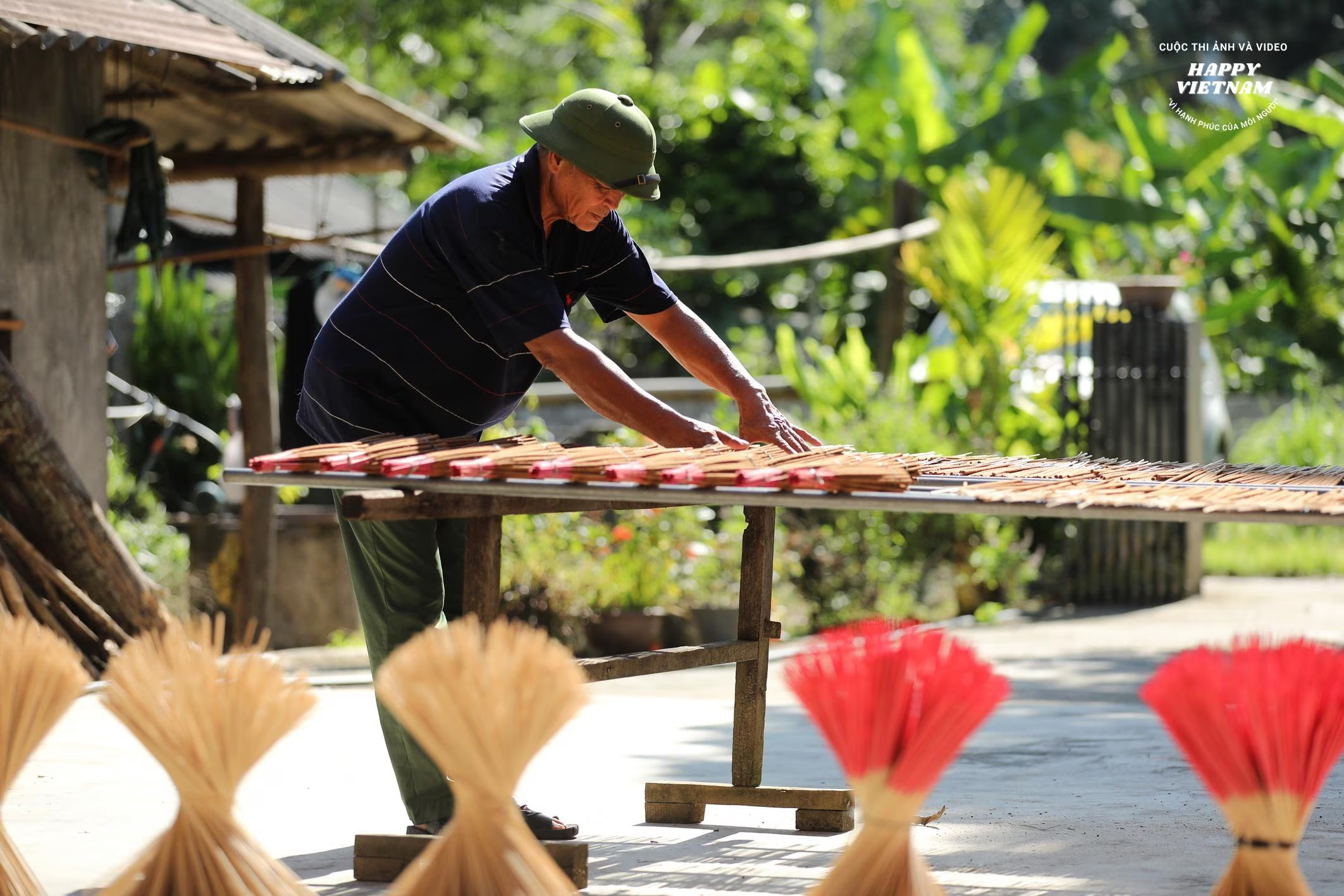
Through the ups and downs of history for hundreds of years, the traditional incense-making villages of the highland people of Ha Giang still maintain the profession of making clean incense completely by hand without using chemicals.
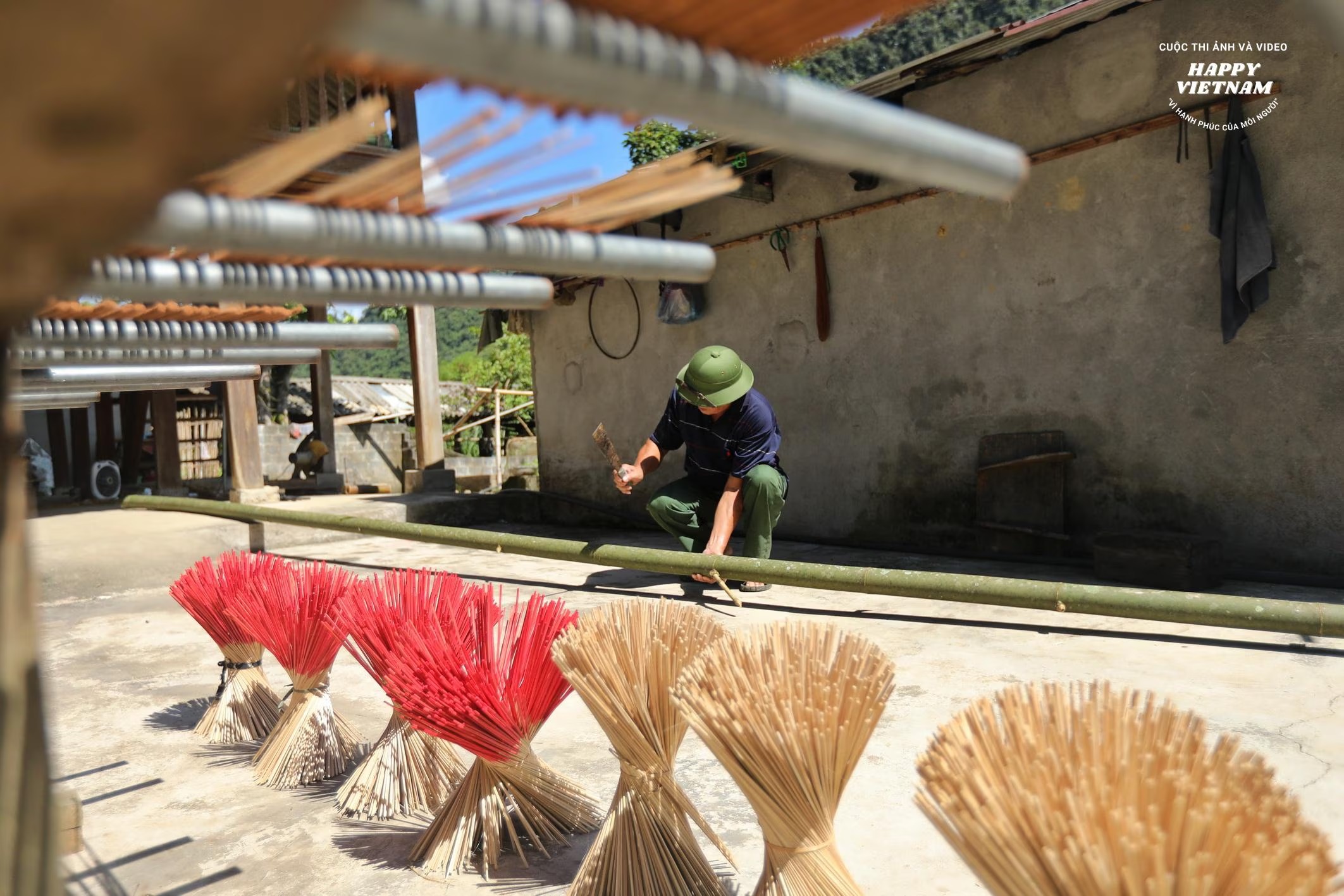
At the Happy Vietnam - Happy Vietnam 2023 contest, launched and organized for the first time by the Department of Foreign Information, Ministry of Information and Communications , author Bui Cuong Quyet participated with a photo series called Traditional incense making in Linh Ho (Ha Giang), so that the audience could clearly experience a traditional profession with a history of hundreds of years of ethnic minorities in Ha Giang.
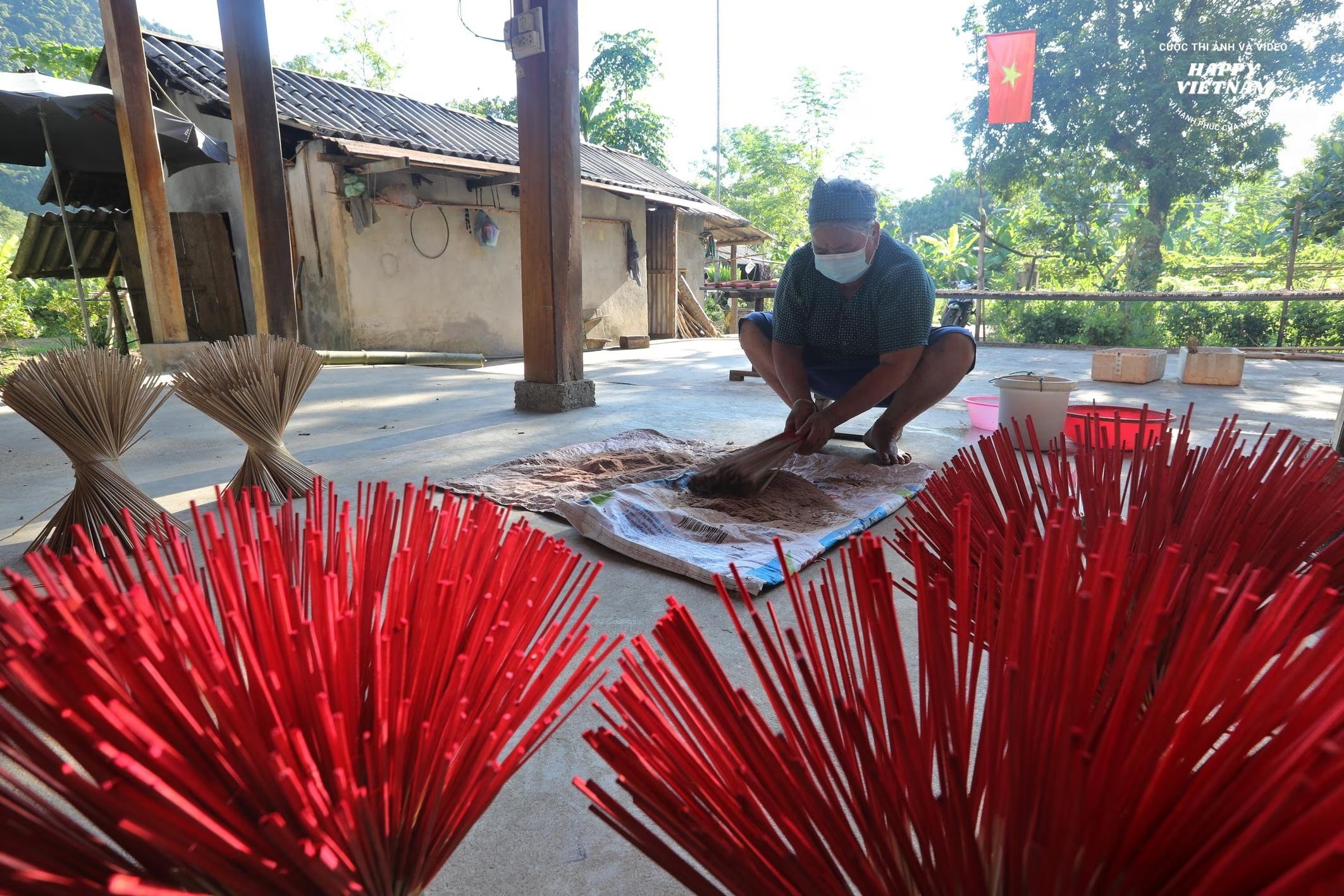
The incense making profession in Linh Ho commune, Vi Xuyen district, currently has about 100 households producing traditional incense. The raw materials are collected and processed by the local people themselves in the forest, from mai trees to make incense sticks, cinnamon bark and especially leaves from the forest used to make glue to bind the materials together... Incense products are made by traditional manual methods, so they are chosen by many customers, bringing income and contributing to solving employment for the local people.
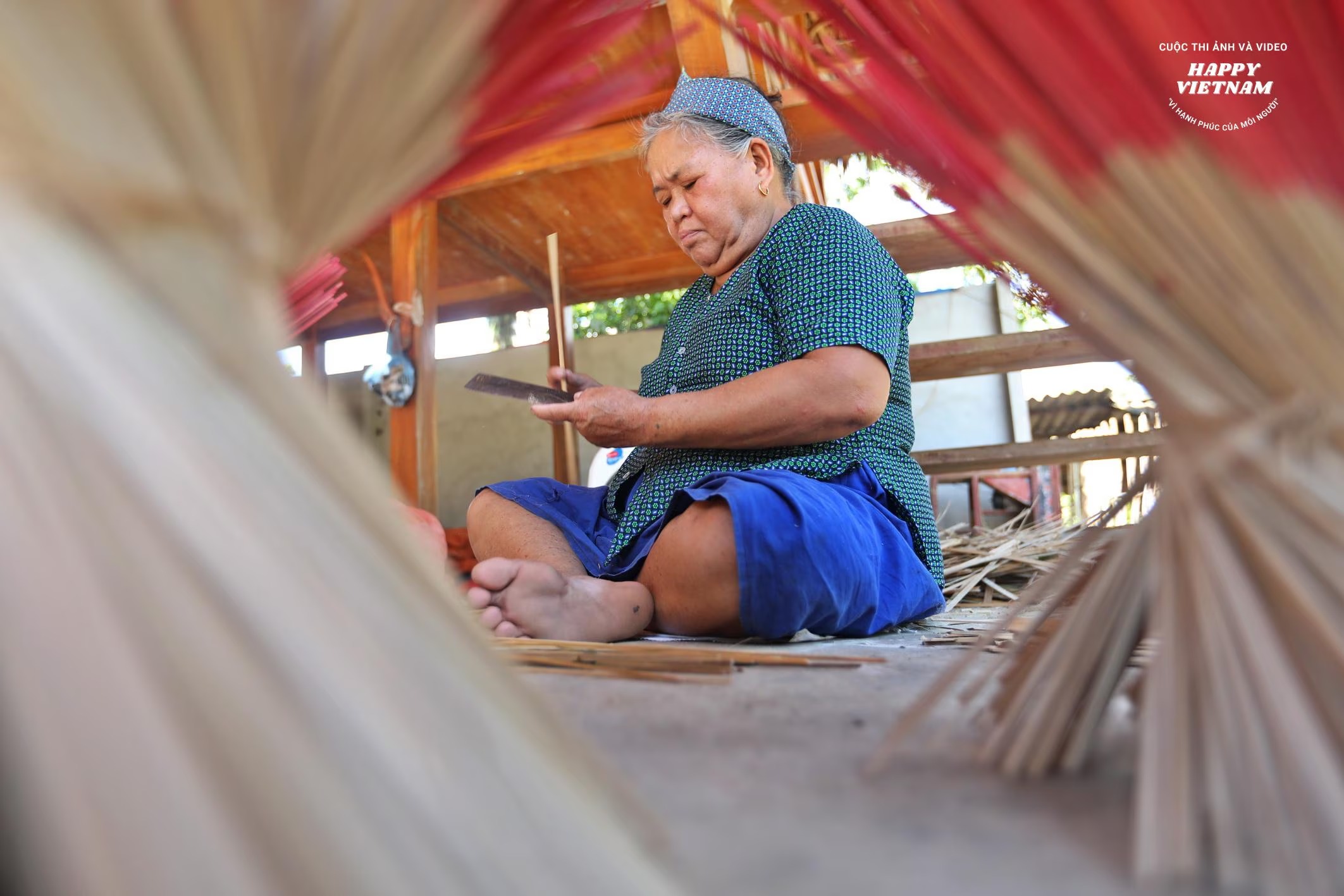
Coming to the Tay villages of Linh Ho commune (Vi Xuyen), in addition to the peaceful, quiet feeling of a remote countryside, you will also be fascinated by the gentle fragrance of incense sticks made by the hands of the local people from leaves and bark of forest trees.
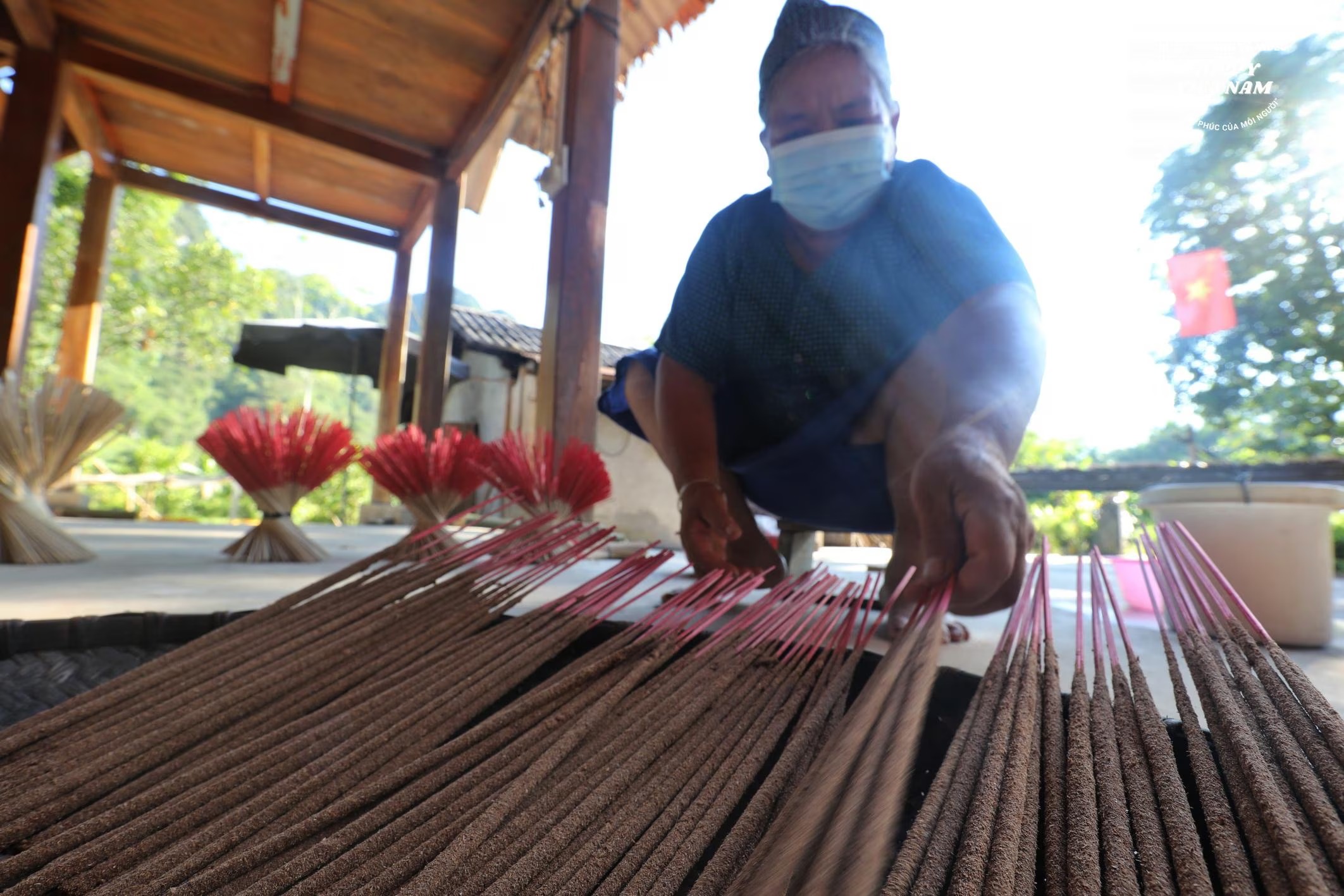
In the past, most households in the village made their own incense to burn on holidays and Tet; but now only a few dozen households know how to make traditional incense.
Each stick of incense is so fragile, but to make it is an art. The first step is to split the incense sticks, which are made from bamboo trees with long and straight segments that are soaked in a pond for several months, then taken out to dry in the sun and split into small pieces, about 40-50 cm long. To make the incense stick burn well and not go out halfway, people have to dry the incense sticks thoroughly before rolling them in flour.
The Tay people of Linh Ho commune make incense powder from cinnamon bark and wild grapevines. The bark is dried, chopped and pounded after being collected from the forest, then mixed in a certain ratio to ensure adhesion and fragrance. Then comes the incense rolling stage, which is the most difficult stage because it is very difficult, requiring the worker to be skillful and quick.
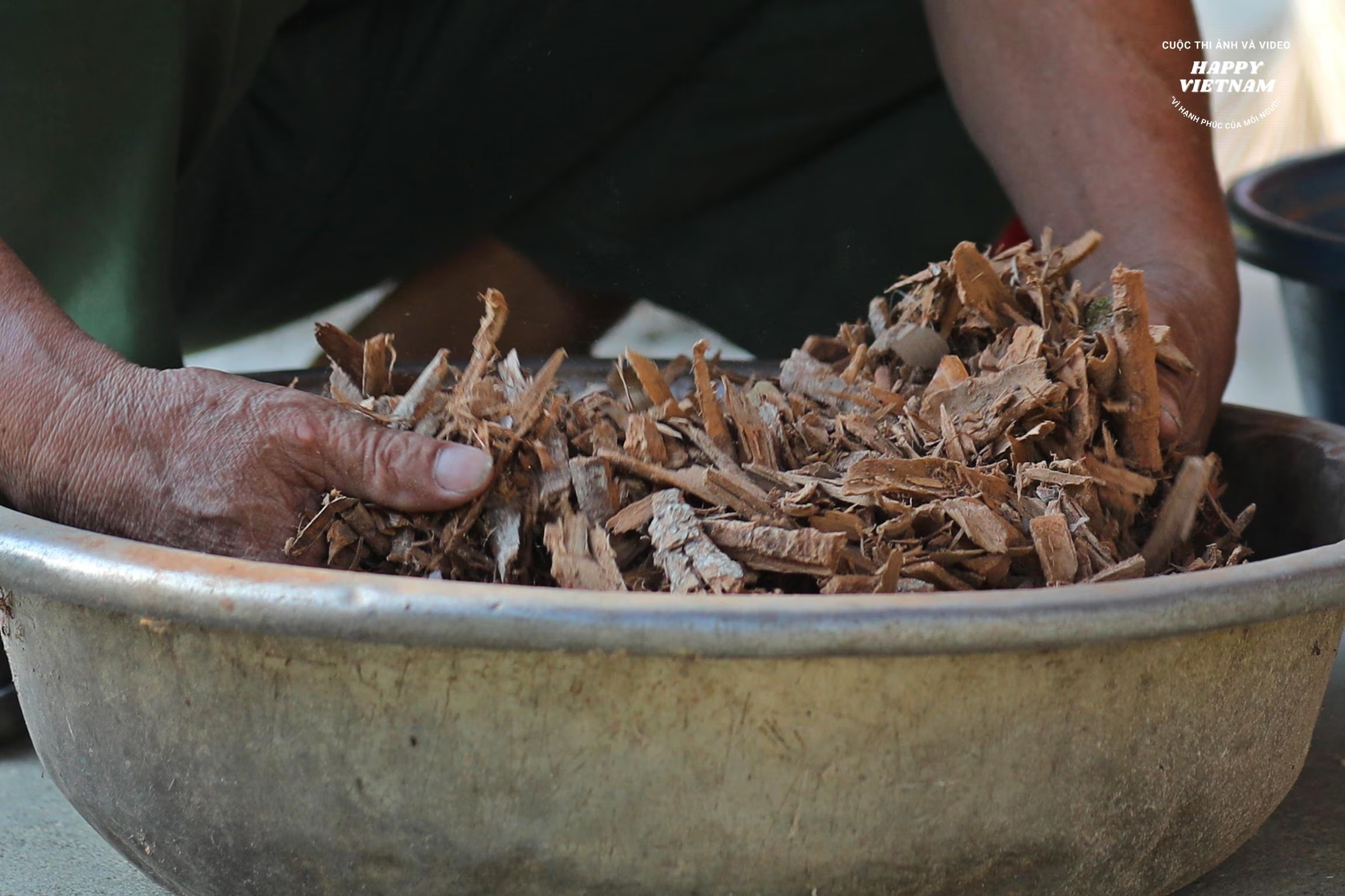
When rolling incense, the maker dips the incense stick into a bucket of water, then rolls it back and forth on the pre-mixed bark powder, then dips it into the bucket of water and continues rolling, like that until getting a stick of incense the size of a chopstick. Then dry it in the light sun, about 2-3 days, to ensure the incense stick is dry, hard and burns well. The incense made by the Tay people in Linh Ho when burned gives off a pure, pleasant aroma because it is made from natural ingredients and is safe for human health.

Currently, in Linh Ho commune, there are still about 50 households that preserve the incense making profession, but people mainly do it during the off-season, so the income is not significant, on average each household earns an additional income from making incense of about 15 - 20 million VND/year. On market days, people often sell at the commune's central market and sell to some shops in neighboring communes.
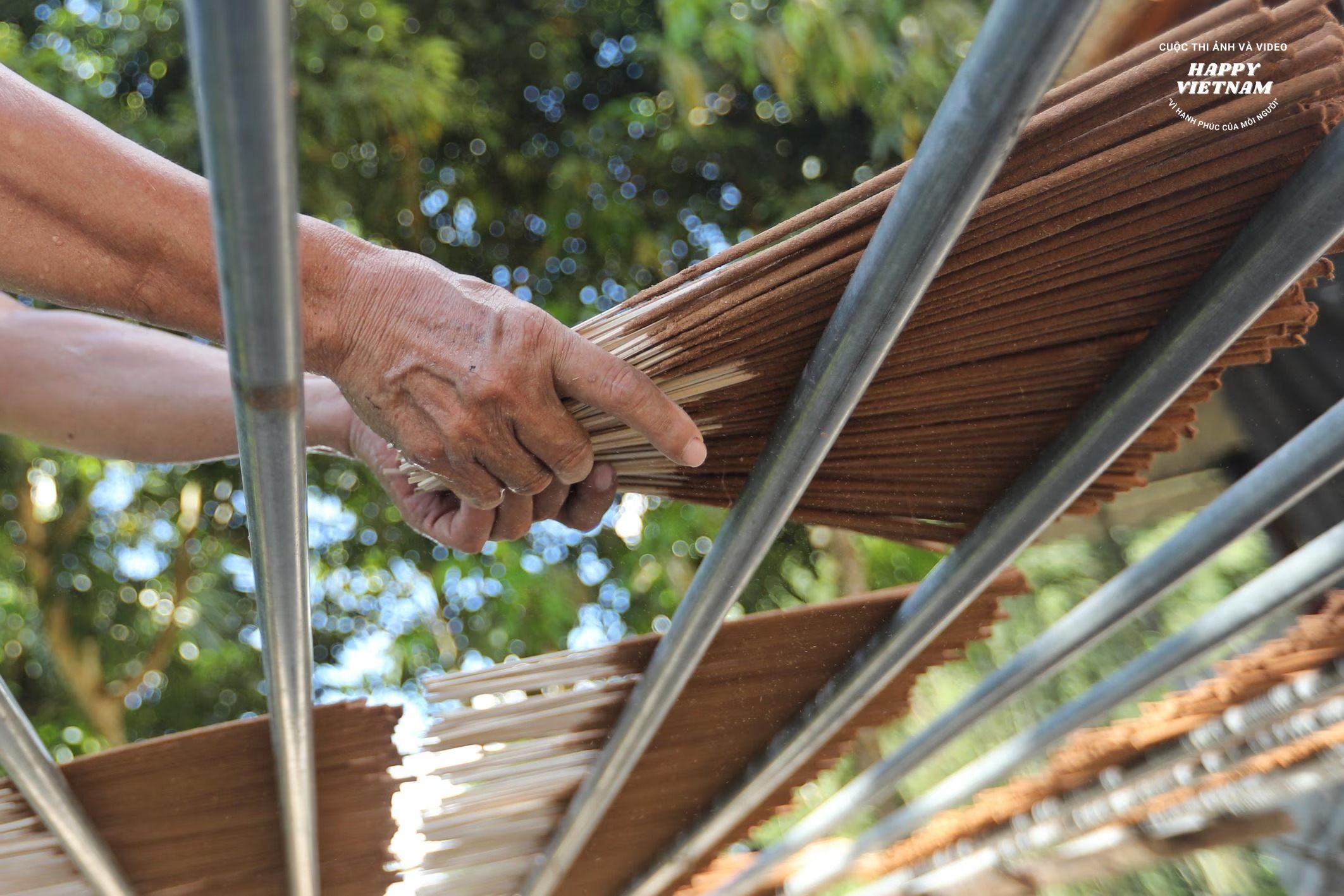
Over time, the traditional incense making profession has been gradually restored and developed by the local people.
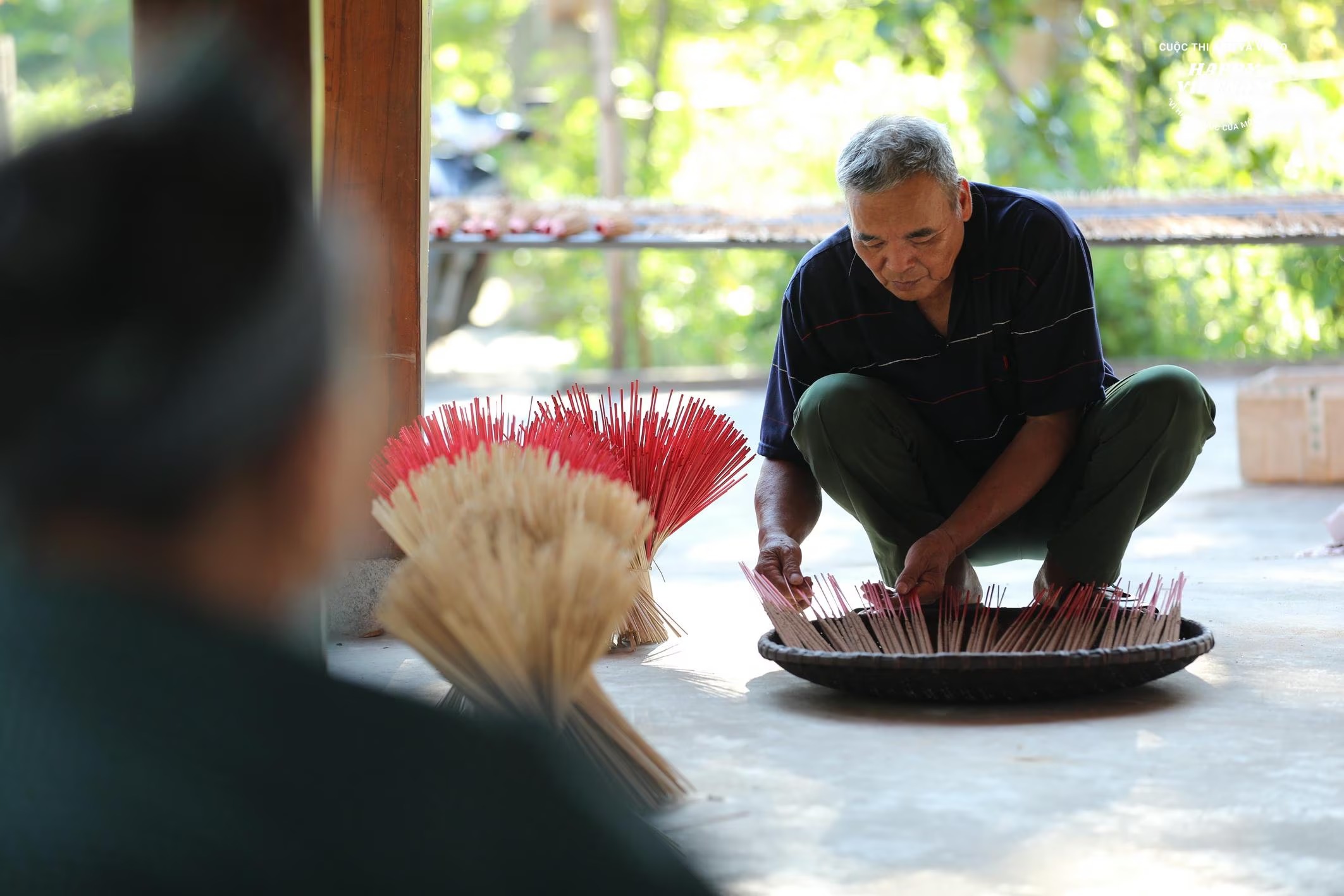
Coming to each traditional craft village in Vi Xuyen is also an experience of a typical traditional craft in the cultural life of the people here./.
vietnam.vn


![[Photo] President Luong Cuong presents the 40-year Party membership badge to Chief of the Office of the President Le Khanh Hai](https://vphoto.vietnam.vn/thumb/1200x675/vietnam/resource/IMAGE/2025/5/19/a22bc55dd7bf4a2ab7e3958d32282c15)


![[Photo] Close-up of Tang Long Bridge, Thu Duc City after repairing rutting](https://vphoto.vietnam.vn/thumb/1200x675/vietnam/resource/IMAGE/2025/5/19/086736d9d11f43198f5bd8d78df9bd41)

![[Photo] Panorama of the Opening Ceremony of the 43rd Nhan Dan Newspaper National Table Tennis Championship](https://vphoto.vietnam.vn/thumb/1200x675/vietnam/resource/IMAGE/2025/5/19/5e22950340b941309280448198bcf1d9)






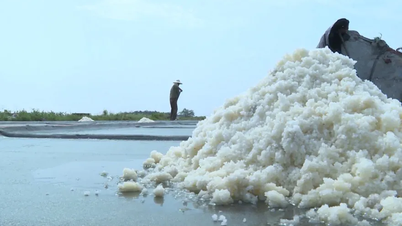







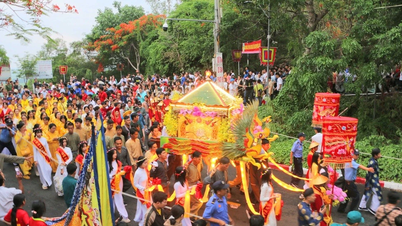


















![[Photo] General Secretary To Lam attends the conference to review 10 years of implementing Directive No. 05 of the Politburo and evaluate the results of implementing Regulation No. 09 of the Central Public Security Party Committee.](https://vphoto.vietnam.vn/thumb/1200x675/vietnam/resource/IMAGE/2025/5/19/2f44458c655a4403acd7929dbbfa5039)












































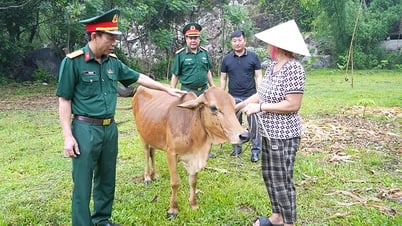

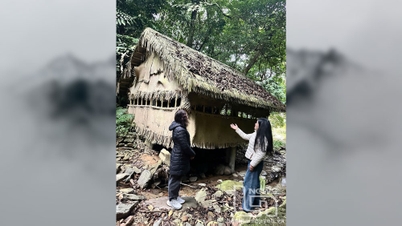

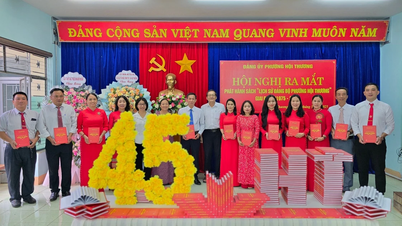










![[VIDEO] - Enhancing the value of Quang Nam OCOP products through trade connections](https://vphoto.vietnam.vn/thumb/402x226/vietnam/resource/IMAGE/2025/5/17/5be5b5fff1f14914986fad159097a677)



Comment (0)